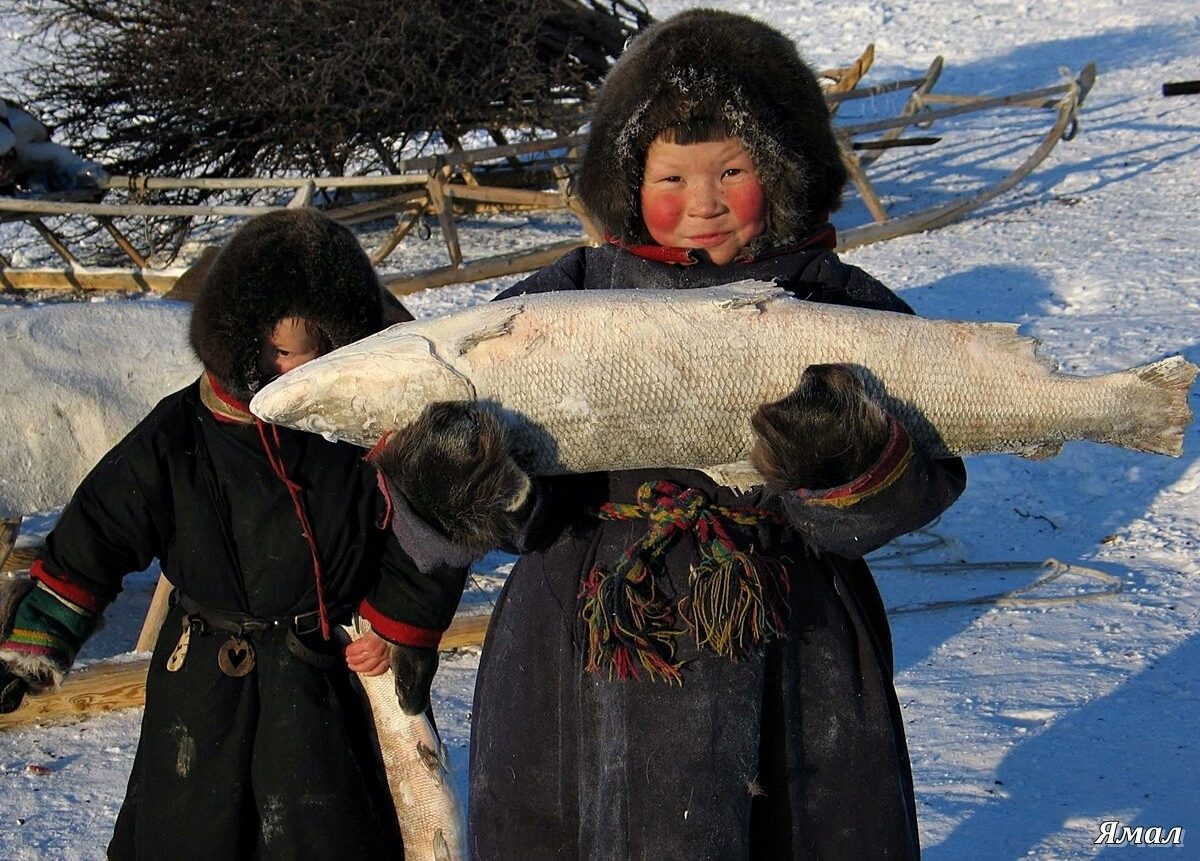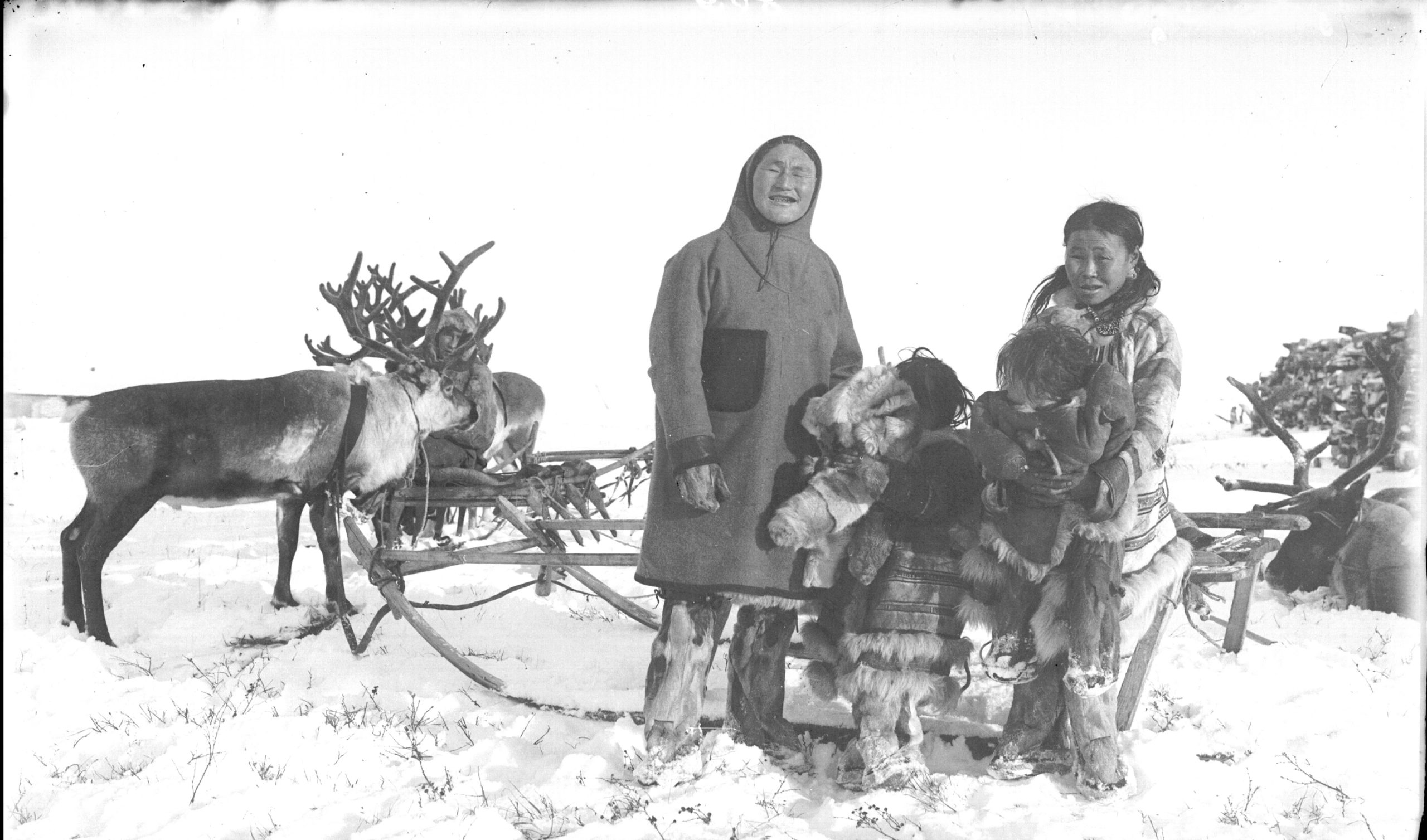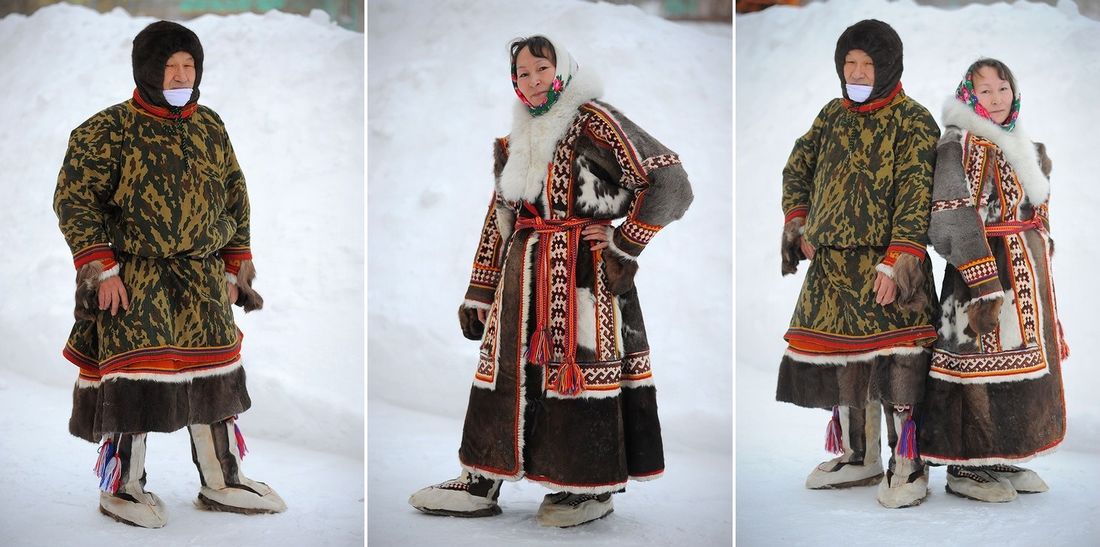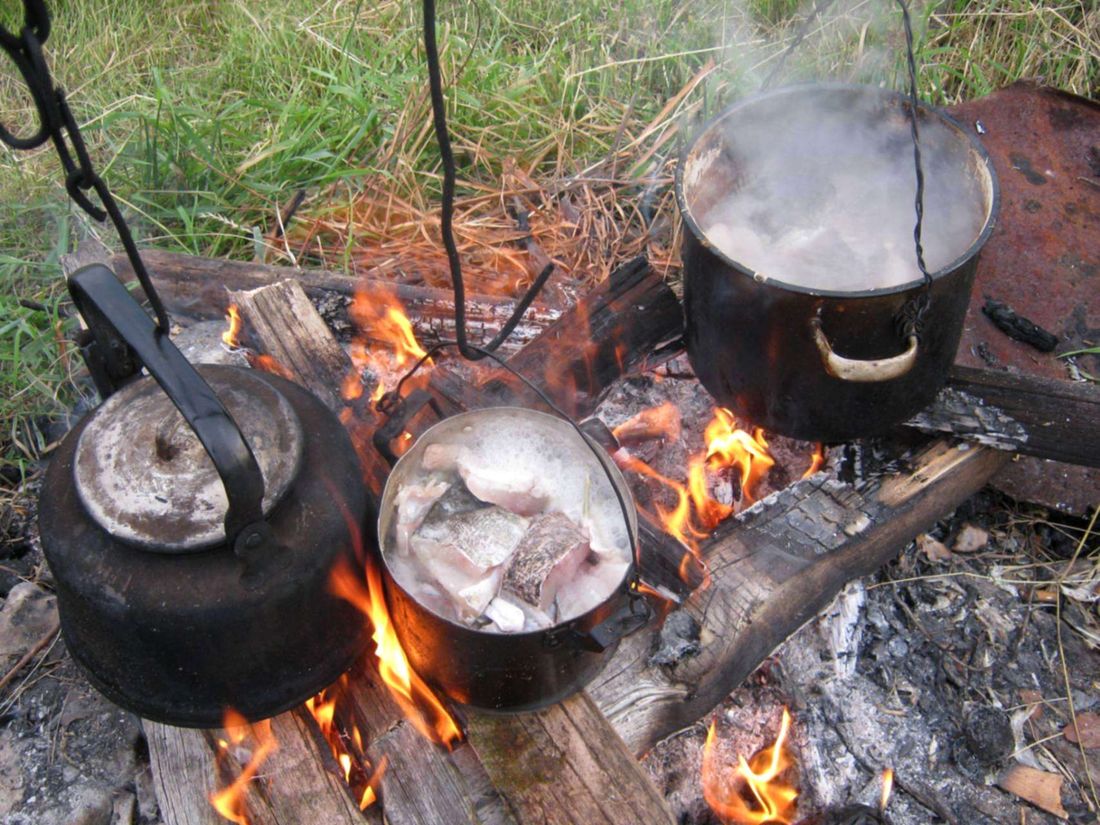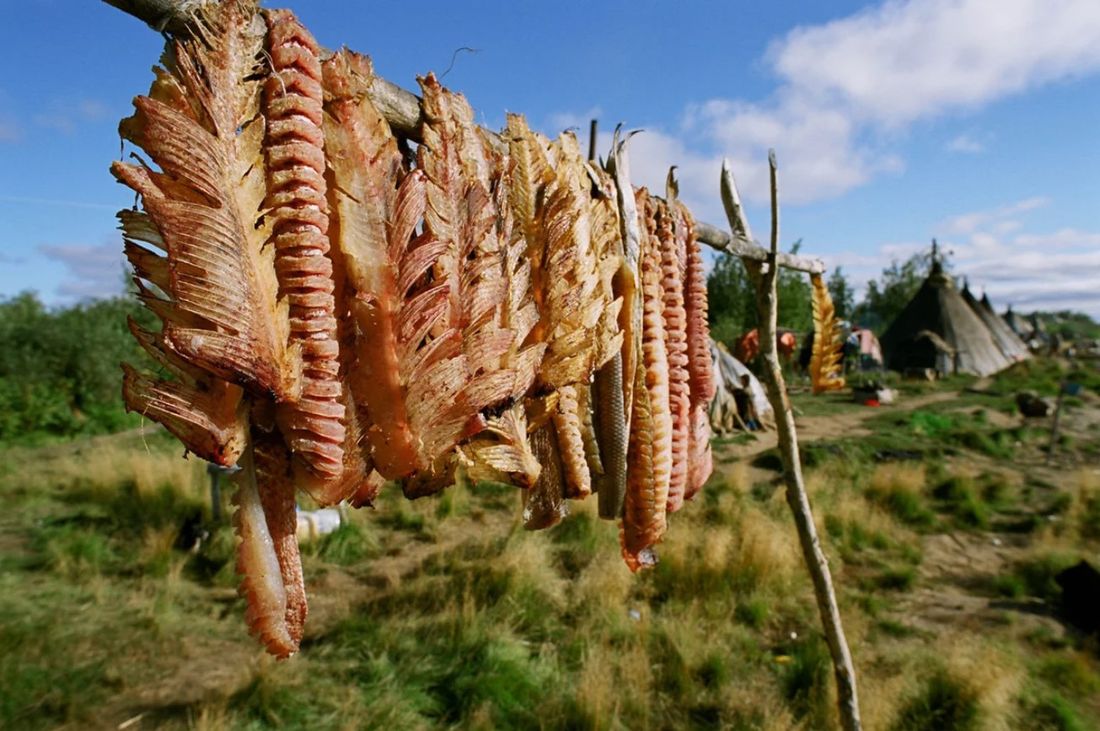The rare nationality of the Enets is represented in our project by Zoya Bolina, the chief specialist on the Enets culture of the Taimyr House of Folk Art, the author of the book about compatriots called Ezzuuy (The Trail of a Nart), and her brother Peter Bolin, who worked as a zootechnician and a reindeer breeder.
“The Enets people history researchers note that the Enets are descendants of the ancient Samodian (Samoyed) ethnos that lived in the south of Siberia”, Zoya answers the question of how the Enets appeared in Taimyr. “Under the influence of stronger neighboring ethnic groups (primarily the ancient Turkic), the Samoyed ethnos split into separate peoples and ethnic groups, which for a number of reasons were forced to leave their homes and move deep into the West Siberian taiga, and then to the forest-tundra and tundra. More militant Turkic groups constantly attacked the peoples (who were at war with each other) and drove them out of those places. First to Western Siberia, then to the North. The Nenets reindeer people who needed pastures, attacked the Enets constantly and moved them further to the North”.
In the 17th century, on the lands of the ancient and most numerous Enets clan of Mogadi, the famous fort Mangazeya was built, which was the most important stronghold of the Russians in the development of the northern Siberia for several decades. And again the Enets had to retreat further to the North.
It is believed that the clan Enets live only in Taimyr. Peter says that in those days, when he was herding reindeer, he heard from the Yamal people that there was a village in the north of the Ural Mountains where only manto lived (as the Enets are called there), who speak their native language. So the question of the people’s settlement geography needs to be clarified.
1. In 2010, during the census in Taimyr, 227 Enets were counted. The number is very controversial, says Peter Bolin. Because in the Soviet times, many Enets were rewritten as Nenets. And he gives an example: when after the army he changed his passport, the girl in the military registration and enlistment office wrote in the nationality column: Nenets. She said, “Doesn’t matter”. The dispute was resolved in favor of the demobilized soldier, but all his sisters, and many compatriots, were recorded as Nenets.
There is nothing superfluous in the clothes of the North peoples. Everything is driven by the need to survive in difficult conditions. The brother and sister talk about the peculiarities of the Enets winter shoes – long fur boots called bokars. The sole is thought out three times rationally. Shaggy so that it is not slippery. Tough and durable, sewn from the part of the deer that is at the hoof. Such a sole is enough for a few bokars. In addition, it does not leave a human odor, which is important when hunting.
3. The Enets are engaged in hunting and fishing. The reindeer have always been used just as transport (only the Silkin family has been engaged in reindeer husbandry since tsarist times). And the Nenets are reindeer herders, so Peter Bolin distinguishes the features of the two similar-sounding peoples’ life. The Nenets stand in camps of five raw-hide tents (indigenous houses), and the Enets always live one family at a place, rarely two or three. Because they have fishing points in different places.
The brother and sister remember the times of their childhood with pleasure. They lived with their parents in the tent. It was a cone-shaped structure with almost half a hundred poles, covered with nukes (sheared deer skins), with a circle of about six meters in diameter. There was a fireplace inside and sleeping places on both sides of it. A family of seven were easily accommodated in such a tent. There was also room behind the fireplace for a grandfather.
4. The cuisine of all the Northern peoples is similar, says Peter who managed to work in many parts of Taimyr. Fish and venison are eaten here raw, boiled and dried. One of the favorite national dishes of our heroes is barika. Now it is rarely cooked. Dried fish – yukola – is finely cut, pounded in fish oil and stewed for a long time over low heat. It turns into a homogeneous porridge, a delicacy that was eaten instead of butter with black cakes made from rye flour. Barika was made in summer and shandyusai osa – in winter. The inner fat of the reindeer was melted, mixed with finely chopped boiled meat, tamped, and put in the cold. On long trips, when there was no time to cook, a piece of such dish gave a feeling of satiety for a long time.
5. The Enets word “enchi” is translated as “man”. “Mouse” in Enets is “tobik”, “cloudberry” – “morgue”. Enets belongs to the group of Samoyed languages, which includes Nenets, Nganasan, Selkup ones. Samoyedic languages are an independent branch of the Uralic language family, the other independent branch is formed by the Finno-Ugric languages.
In recent years, the Enets language in Taimyr has become less and less common. Our heroes, their elder brother and several other representatives of the older generation speak it. Those who are younger, even 50-year-old people, do not know their native language. Studying in boarding schools made it possible to get education, but tore them away from their native roots. The Enets language was on the verge of extinction. Therefore, it is difficult to overestimate the importance of Zoya Bolina’s book Ezzuui. All texts and stories-legends are written here in both Russian and Enets languages.
Read about other Taimyr indigenous peoples – the Nganasans, Dolgans, Evenks – on our site.
Text: Tatiana Rychkova, Photo: Nikolay Shchipko and open sources
